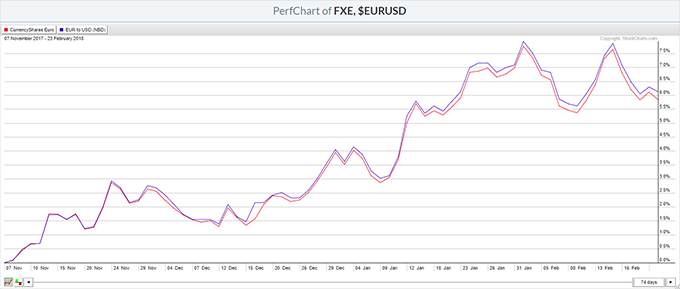Results 1 to 13 of 13
Threaded View
-
18th Mar 2018, 04:05 PM #3
Trading Forex
The majority of currency trading takes place in the forex spot market. In the forex spot market, large banks and other financial institutions trade currencies among themselves either for immediate delivery (spot market) or for settlement at a later date (forward market.) Trades in the forex market occur over the counter, and the minimum size of trades is generally very large. For these reasons, it has traditionally been impractical for individual investors to trade in the forex market.
However, over the past several years, a new retail forex market has developed. This market allows individual investors and small institutions to trade in the forex market in smaller volumes than those previously available. For the more heavily traded currencies, bid-ask spreads are relatively narrow, and market liquidity can be excellent. Many currency brokerage firms will also allow investors high levels of leverage – in most cases 50:1. In the case of some brokers from outside the United States, leverage levels can be even higher. While the use of leverage can magnify investors' potential returns, it is important to remember that leverage also magnifies potential losses. Investors should carefully consider their risk tolerance before employing leverage. (For more information concerning leverage in the forex markets, see Forex Leverage: A Double-Edged Sword. For another viewpoint on leverage, also see Leverage's "Double-Edged Sword" Need Not Cut Deep.)
Because currency brokerage firms vary greatly in their resources, minimum account sizes, available leverage and execution ability, investors should carefully evaluate several brokerage firms before opening a currency trading account. (To learn more, see Forex Basics: Setting Up An Account.)
Derivatives Markets
Derivatives include futures, options and exotic, customizable derivative contracts. While the more exotic derivatives are generally designed for institutional investors, individual investors often use futures and options.
The most popular currency pairs have both futures contracts (that track the currency pair's movements) and options on those futures contracts. Individual investors can buy or sell the futures or the options to speculate on the direction of the currency pair. These futures and options usually feature reasonably good liquidity, transparent pricing and moderate capital requirements. For these reasons, futures or options are a viable choice for individual investors interested in the currency market. (Learn more about this method of forex trading in Getting Started In Foreign Exchange Futures.)
When using futures or options, it is very important to remain aware of the risks involved in using these financial instruments. While large gains are possible, the majority of investors using these securities eventually lose money. Additionally, futures contracts carry the possibility of potentially unlimited losses. Before employing a futures trading strategy, investors should carefully consider their risk tolerance and thoroughly understand potentially adverse price movements.(For more, see: How To Use FX Options In FX Trading)
Currency Exposure Using Exchange Traded Products
A relatively new addition to the currency trading universe is the exchange-traded fund (ETF). ETFs have been popular vehicles for tracking stock or bond indexes for many years, but ETFs that track currency movements are relatively new. A currency ETF can be bought and sold just like any other stock. Investors who believe the currency is about to rise in price should buy the ETF; investors who believe the currency will decline in value should sell the ETF. One advantage of ETFs is that they may be more familiar to the average investor than the forex or derivatives markets. ETFs also carry stricter margin requirements, so they may appeal to more risk-averse investors. (Check out Profit From Forex With Currency ETFs and Currency ETFs Simplify Forex Trades.)
An example of a popular group of exchange-traded currency product is distributed by Guggenheim Fund Distributors, LLC and known as CurrencyShares Trusts. In case you aren’t familiar, the CurrencyShares Trusts are used by retail or institutional investors as simple, cost-effective ways of holding positions in currencies such as the Australian Dollar, British Pound Sterling, Canadian Dollar, Chinese Renminbi, Euro, Japanese Yen, Singapore Dollar, Swedish Krona and Swiss Franc.
Taking a look at the chart below, you can see the price movements of both the CurrencyShares Euro Trust (FXE) and the EUR/USD Currency pair. For those looking for a tracking asset that can be bought or sold like any other stock without the need for opening a forex or futures account, you can see why these types of products are so popular. (For further reading, see: ETF Tracking Errors: Protect Your Returns)

Indirect Currency Exposure
Forex investors should know that purchasing foreign securities exposes them to the risk of potential currency movements. Investors with no intention of directly trading foreign currencies, however, can benefit from a better understanding of the links between international currencies – because these currency movements can ultimately affect the value of other financial assets. (For more on this topic, check out: Understand Indirect Effects of Exchange Rates)
Thread Information
Users Browsing this Thread
There are currently 2 users browsing this thread. (0 members and 2 guests)
Similar Threads
-
[GET] Learn to Trade Forex and Stocks: From Beginner to Advanced
By AliKashif7 in forum Udemy 100% FREE for LIMITED TIMEReplies: 2Last Post: 13th May 2019, 02:57 PM -
Mining of crypto-currencies on P2pool
By kryptonite in forum Mining and PoolsReplies: 0Last Post: 13th Jan 2016, 02:42 PM

















 Reply With Quote
Reply With Quote



 Staff Online
Staff Online
Vn5socks.net 07-07-2024 | socks 5...
Live | 51.38.115.2:30180 | Germany | Limburg an...